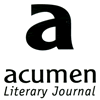Reviews
Aspects of the Polish Tradition
Who Hath Bewinged Me by Jan Kochanowski, translated by Teresa Baluk-Ulewiczowa. Biblioteka Tradycji Literackich, Collegium Columbinium, 31-831 Krakow, Fatimska 10, Poland. [http://www.filg.uj.edu.pl/ifp/~wwalecki]. 139pp; $10.00.
Poems-Letters-Drawings by Cyprian Norwid, edited and translated by Jerzy Peterkiewicz (poems in collaboration with Christine Brooke-Rose and Burns Singer). Carcanet. 95pp; £7.95.
The work of Polish poets of the twentieth century – such as Herbert, Milosz, Rosewicz and Szymborska – has made a considerable impact outside Poland. The heritage of older Polish poetry remains much less well-known. Here are two volumes which offer those of us who don’t read Polish an exciting chance to increase our acquaintance with the Polish poetic tradition. Jan Kochanowski (1530-1584) was the most important poet of the Polish Renaissance. During the 1990s his cycle of 19 laments (Treny) on the death of his daughter Orszula attracted several translators – Heaney and Baranczak, Czerniawski, and Milos. Other areas of Kochanowski’s work have remained largely unexplored, so that the substantial selection of English versions by Teresa Baluk-Ulewiczowa (handsomely presented opposite their Polish originals) is particularly welcome. Here, in addition to work from the Treny, are extracts from his drama Odprawa poslów greckich, perceptive representations of key moments in the myth of Troy; poems from his Fraski (Trifles), witty and sophisticated epigrams; from his Piesni, many of which are distinctly Horatian in tone and manner, often strikingly reminiscent of the slightly later work in English of poets such as Jonson and his followers. The translator has chosen to use a deliberately archaic English idiom (for reasons which are very cogently defended in an essay printed as an afterword) and the results are, for the most part, both readable and poetically effective. Only in some of the rhymed poems in short lines is there a slight awkwardness. Kochanowski’s work is varied in theme and tone; there are religious poems and bawdy epigrams, poems on music and love, on the threat posed by the Turks; there are elegies and drinking songs. This is a rare opportunity to make the acquaintance of one of the most important Slavonic poets and is warmly recommended.
A fascinating figure from a much later generation is Cyprian Norwid (1821-83). Orphaned young, and with little formal education, Norwid was exiled from Poland for most of his adult life, spent time in Italy (as a student of sculpture), Paris (where he was a friend of Chopin), America and London. His life was lived in poverty and he died in a home for the destitute. Little of his work was published during his lifetime. Since the early years of the twentieth century his reputation has increased, his work become more widely known. His attempt to incorporate the rhythms of colloquial speech into his poetry led to some very original metrical experiments – at times the English reader may well be reminded of Browning, or aspects of the early Pound. He is often obscure and oblique, heavily ironic, penetrating in his revelation of social hypocrisy and sentimental aestheticism. The poems and the letters in this selection reveal a keenly analytical mind, quirky and startlingly honest in its reflections on contemporary events, both political and cultural, and on some of the perennial questions of philosophy and aesthetics. They are also often quite moving in what they reveal of the circumstances of Norwid’s day to day life. (There is more Norwid in English to be found in issue 6 of przekladaniec: a journal of literary translation, published in Krakow (“Tertium”, Al. Mickiewicza 906, 31-120, Krakow. $10.00), translated by Teresa Baluk-Ulewiczowa; there is much else of interest here, too, not least an intriguing essay by Marta Gibinska-Marzec, “Art and Life – Szymborska’s Constant Amazement”, which discusses Szymborska’s dealings with Shakespeare). Reading a poem such as Norwid’s ‘Marionettes’ one cannot escape pre-echoes of Eliot. Indeed, time and again, one is struck by the peculiar proto-modernism of Norwid’s sensibility and art. Caracanet are to be thanked for giving us the chance to acquire an increased familiarity with this remarkable figure.
Page(s) 115-116
magazine list
- Features

- zines

- 10th Muse
- 14
- Acumen
- Agenda
- Ambit
- Angel Exhaust
- ARTEMISpoetry

- Atlas
- Blithe Spirit
- Borderlines
- Brando's hat
- Brittle Star

- Candelabrum
- Cannon's Mouth, The
- Chroma
- Coffee House, The
- Dream Catcher
- Equinox
- Erbacce
- Fabric
- Fire
- Floating Bear, The
- French Literary Review, The
- Frogmore Papers, The
- Global Tapestry
- Grosseteste Review
- Homeless Diamonds
- Interpreter's House, The
- Iota
- Journal, The
- Lamport Court
- London Magazine, The
- Magma
- Matchbox
- Matter
- Modern Poetry in Translation
- Monkey Kettle
- Moodswing
- Neon Highway
- New Welsh Review
- North, The
- Oasis
- Obsessed with pipework
- Orbis
- Oxford Poetry
- Painted, spoken

- Paper, The
- Pen Pusher Magazine

- Poetry Cornwall
- Poetry London
- Poetry London (1951)
- Poetry Nation
- Poetry Review, The
- Poetry Salzburg Review
- Poetry Scotland
- Poetry Wales
- Private Tutor
- Purple Patch
- Quarto
- Rain Dog
- Reach Poetry
- Review, The
- Rialto, The
- Second Aeon
- Seventh Quarry, The
- Shearsman
- Smiths Knoll
- Smoke
- South
- Staple
- Strange Faeces
- Tabla Book of New Verse, The
- Thumbscrew
- Tolling Elves
- Ugly Tree, The
- Weyfarers
- Wolf, The

- Yellow Crane, The
